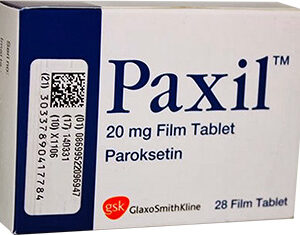Therapeutic Applications
Celexa, with its active compound citalopram, is a medication primarily prescribed for the alleviation of major depressive disorder (MDD). Its impact on the mood-regulating neurotransmitters in the brain makes it effective in diminishing the persistent feelings of deep sadness, hopelessness, and lack of interest associated with depression.
Administration Guidelines
Commencing the use of Celexa necessitates a healthcare provider’s direction on dosage, which can vary based on individual patient needs. Initial doses are generally lower, potentially increasing incrementally to the recommended level. Celexa can be ingested sans regard to meals, and it’s crucial to consume it at a consistent daily time.
Cautionary Details
Due consideration of medical history is essential before initiating citalopram, as it may not be suitable for individuals with certain conditions. Patients should monitor for signs of aggravated depression or emerging suicidal thoughts, especially at treatment onset or dose shifts. Precautions are advised for those with cardiac, liver, or kidney issues, and those susceptible to electrolyte imbalances or bleeding disorders.
Non-Indications
Appropriateness of citalopram usage excludes individuals with hypersensitivity to the drug or its constituents. Co-administration with monoamine oxidase inhibitors (MAOIs) or pimozide is contraindicated due to potential fatal interactions. Those recently on MAOIs should allow a lapse period before commencing Celexa.
Interaction Potential
This antidepressant may interact with various substances, affecting therapeutic efficacy or precipitating hazardous reactions. Interactions can occur with other central nervous system (CNS) depressants, serotonergic agents, blood thinners, and certain nonsteroidal anti-inflammatory drugs (NSAIDs). Maintaining open dialogue with healthcare providers about concurrent medication usage is pivotal.
Adverse Effects
While Celexa may substantially alleviate symptoms of depression, it is not without potential adverse effects. Common ones may include gastrointestinal disturbances, increased tiredness, sleep difficulties, and sexual dysfunction. Alternative signs necessitating immediate medical attention involve heart palpitations, significant shifts in mood, or signs of bleeding. Continuous monitoring is vital for timely response to these side effects.
Excessive Dosage Indicators
An overdose of Celexa can be serious, evidenced by symptoms such as dizziness, tremors, nausea, rapid heart rate, or seizures. It is critical to seek emergency medical intervention if an overdose is suspected. Ensuring responsible usage in accordance with prescribed recommendations helps avert such risks.
Guidance on Skipped Doses
Should a dose of Celexa be omitted, it is advisable to consume the missed dose as soon as the oversight is noted, provided the subsequent scheduled dose is not imminent. It is imperative not to double up on doses to compensate for a missed one, which could heighten the risk of adverse effects.
Storage Directives
Ensuring the integrity of Celexa involves storing it at room temperature away from excess moisture, heat, and light. It is equally more important to keep the medication out of reach from children or pets, and dispense of it securely when no longer needed or expired, per proper disposal guidelines.
Counseling Patients
Conveying comprehensive information to patients about the intended use of Celexa, anticipated outcomes, and potential side effects is a crucial aspect of treatment. It is beneficial for patients to understand the importance of adherence to their dosage schedule and to stay in communication with their healthcare provider especially should their condition change or if adverse effects emerge.
Understanding Pharmacology
Informed by clinical pharmacology, citalopram’s properties reveal a drug that selectively inhibits the reuptake of serotonin in the synaptic cleft, thus augmenting mood-regulation. Investigating the pharmacokinetic aspects illustrates that Celexa is well absorbed after oral administration, tends to stabilize at a steady-state concentration, and is metabolically processed in the liver.
Drug Absorption and Distribution
Post-ingestion, Celexa demonstrates a steady absorption into systemic circulation, with peak plasma levels reached in a few hours. Its distribution is broad, and while it does bind to plasma proteins, it maintains sufficient free concentration to exert its therapeutic effects.
Elucidating Action Mechanism
As a selective serotonin reuptake inhibitor (SSRI), Celexa operates by reducing the reabsorption of serotonin into presynaptic cells, thereby elevating the levels of this neurotransmitter available in the brain, which is thought to influence mood, emotion, and sleep.
Pharmacodynamic Properties
The pharmacodynamics of Celexa reveal its selective affinity for the serotonin transporter with minimal effects on norepinephrine and dopamine transport mechanisms. The modification of serotonin uptake enhances neuronal communication and potentially leads to neuroplastic changes contributing to mood improvement over time.
Verifying Safety and Effectiveness
The safety and effectiveness of Celexa have been substantiated through rigorous clinical trials. The medication’s benefits in the management of depression are well-documented, with the majority of patients tolerating the drug and some experiencing notable remission of depressive symptoms. Celexa’s efficacy over placebo further accentuates its therapeutic relevance.





Reviews
There are no reviews yet.